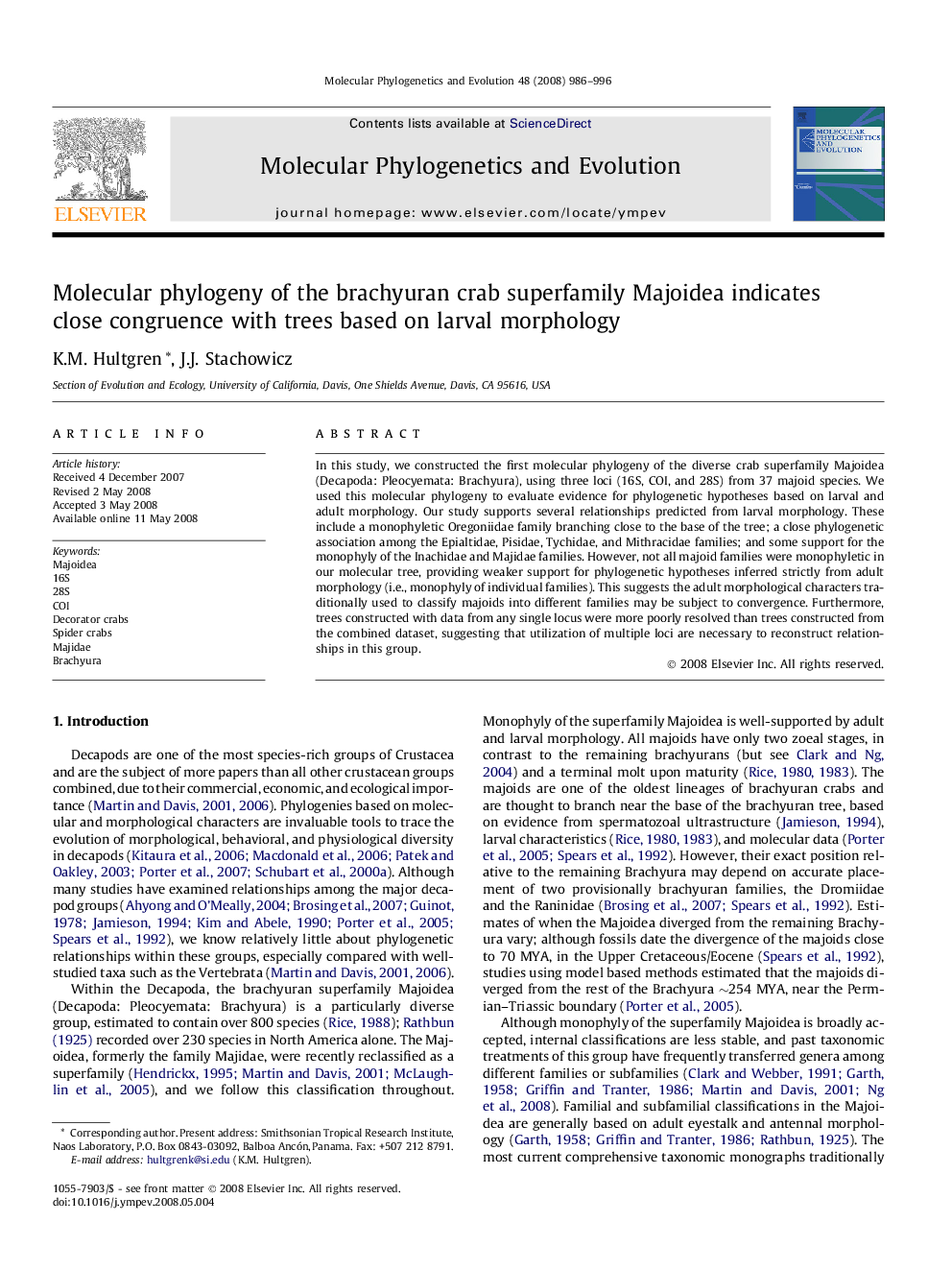| Article ID | Journal | Published Year | Pages | File Type |
|---|---|---|---|---|
| 2835157 | Molecular Phylogenetics and Evolution | 2008 | 11 Pages |
In this study, we constructed the first molecular phylogeny of the diverse crab superfamily Majoidea (Decapoda: Pleocyemata: Brachyura), using three loci (16S, COI, and 28S) from 37 majoid species. We used this molecular phylogeny to evaluate evidence for phylogenetic hypotheses based on larval and adult morphology. Our study supports several relationships predicted from larval morphology. These include a monophyletic Oregoniidae family branching close to the base of the tree; a close phylogenetic association among the Epialtidae, Pisidae, Tychidae, and Mithracidae families; and some support for the monophyly of the Inachidae and Majidae families. However, not all majoid families were monophyletic in our molecular tree, providing weaker support for phylogenetic hypotheses inferred strictly from adult morphology (i.e., monophyly of individual families). This suggests the adult morphological characters traditionally used to classify majoids into different families may be subject to convergence. Furthermore, trees constructed with data from any single locus were more poorly resolved than trees constructed from the combined dataset, suggesting that utilization of multiple loci are necessary to reconstruct relationships in this group.
